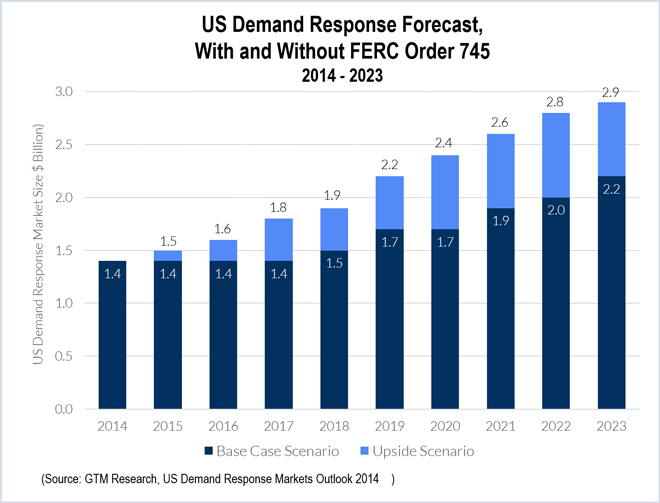By Michael Brooks
The Federal Energy Regulatory Commission on Tuesday rejected PJM’s contingency plan to include demand response in its capacity auctions in the event an appellate court ruling limiting FERC’s jurisdiction over DR is allowed to stand (ER15-852).
FERC called the filing premature, saying it would disrupt the commission’s options in dealing with the aftermath of the Electric Power Supply Association (EPSA) v. Federal Energy Regulatory Commission case.
FERC has asked the Supreme Court to reconsider the 2-1 ruling, which found that Order 745 violated state ratemaking authority by forcing RTOs to pay market-clearing prices to DR resources. While the ruling only directly addressed FERC’s jurisdiction over DR in energy markets, PJM wanted to be prepared in case it were applied to FERC-regulated capacity markets. (See PJM to File Post-EPSA Demand Response Contingency Plan with FERC.)

As a result of FERC’s rejection, PJM said in a statement Wednesday, the BRA for delivery year 2018/19 “will move forward under the existing rules for the participation of demand response.” However, the auction, scheduled for May 11-15, may be delayed as a result of a separate FERC ruling Tuesday that required the RTO to provide additional information on its Capacity Performance proposal. (See related story, FERC: PJM Capacity Performance Filing ‘Deficient’.)
FERC ruled that PJM’s DR idea was good but before its time. “While we recognize that PJM’s goal is to reduce uncertainty surrounding demand response participation in its upcoming BRA, in the present circumstances, it is unavoidable that some uncertainty is inherent in the current stance of the EPSA case,” FERC said.
“Moreover, we are concerned that PJM’s proposal introduces uncertainties that may exceed those it seeks to avoid, particularly with respect to potential unanticipated spillover effects on state programs and private sector arrangements.”
Commissioner Tony Clark dissented, saying that the commission was sidestepping the merits of PJM’s filing.
“Today’s order unnecessarily delays action and perpetuates system inefficiencies created by the overcompensation of demand response products in wholesale electricity markets,” Clark said. FERC should “seize the opportunity to provide guidance on a functional demand-side product to the betterment of the PJM markets.”
Clark, however, said he thought that PJM’s proposal may not have gone far enough and ignored the role its existing Price Responsive Demand product could have played. “Enabling functioning price-responsive demand is the right answer to the conundrum in which we now find ourselves, and it is where the commission should expend the bulk of its efforts,” he said.
PJM had requested the proposal go in effect April 1, in time for the BRA. The RTO argued it was being proactive, and that the changes would only be a temporary measure while FERC developed a more comprehensive solution.
PJM noted that if the Supreme Court granted its writ of certiorari, it would have withdrawn the changes from the Tariff and run the BRA under the previous rules. The court is expected to decide this month whether to take the case.
In its protest to the filing, the Advanced Energy Management Alliance argued that LSEs, curtailment service providers and DR owners would not be able to change their business strategies in time for the BRA. The Illinois Commerce Commission and the Maryland Public Service Commission also argued that in some states, laws and regulations would need to be amended in order to enact the changes.
While not taking a strong position on the merits of PJM’s proposal in its protest, Public Service Enterprise Group argued that if FERC accepted the plan, it should require PJM to keep the changes intact regardless of whether the Supreme Court took the EPSA case, as withdrawing them would create uncertainty in the results of the BRA.
PJM proposed creating two new capacity products: Whole Load Reductions and Whole Energy Efficiency Load. PJM General Counsel Vince Duane said in December, when the proposal was first presented to stakeholders, that the term “wholesale entity” was left “deliberately vague” to allow load-serving entities and electric distribution companies to submit DR bids.




